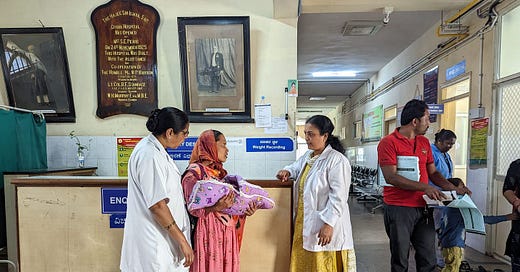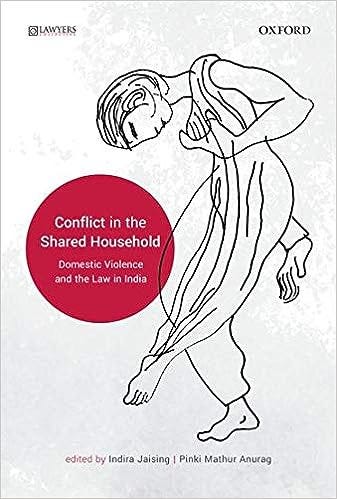India has a crisis of gender-based violence. But who cares?
TK #3: Introducing the first story from my Pulitzer Center project, excerpts from a book on India's domestic violence act, and some reads on the sexualized violence in Manipur conflict.
Hello everyone,
Welcome back to TK, a newsletter from me, Mahima Jain. This is the third edition, and I am very pleased that I’ve made it through the first month of writing TK. Also, I am grateful for the support of the readers.
If you are new, and wondering what TK stands for, do check out the About page or the first edition newsletter. You can subscribe to get future updates!
Violence against women was on my mind, the focus of my work, and in the news this past fortnight. So this week’s TK is going to cover gender-based violence and the responses to it. I start with a brief introduction to my recently-published long-form story; an excerpt from one collection of essays that I turned to when reporting on this piece; at the end are some (borrowed) reflections from reportage on Manipur.
This is a…
…long-form piece I wrote on how India’s public health sector tackles gender-based violence for Scroll.in’s Common Ground section. I briefly mentioned in the last edition of the newsletter that a story was giving me sleepless nights. Today, it is finally online.
How hospitals are helping combat violence against women
A doctor and nurse at Bengaluru’s HSIS Gosha Hospital, which has a hospital-based crisis centre. Photo: Mahima Jain
This is my first project with the Pulitzer Center for Crisis Reporting (I collaborated on one previously with the brilliant climate journalist Bhasker Tripathi). As part of this project, I am covering how India’s public health sector responds to violence against women. I am working on a few more stories, in addition to the Scroll piece. But first, let’s start with the one that is out.
When a woman visits a hospital with an injury, often doctors and nurses will limit the treatment to what is obvious. But in fact, her visit is an opportunity to find out if the woman is a survivor of gender-based violence. And if she requires much broader, long-term support.
I spoke to more than 30 counsellors, nursing staff, and doctors in eight public hospitals across Maharashtra, Karnataka, and Gujarat. In this story, I look at how under different initiatives in these states, doctors and other personnel in certain hospitals undergo training to identify such signs of violence. This is supported by counselling, strategies for safety, and referrals to other service providers such as lawyers. I also cover how these training programmes were set up, how they are run, and the challenges they face.
Of the women who reported violence, 98% never sought any help from a doctor because they feared that the matter will be reported to the police and due to the “absence of comprehensive medical care available in close proximity to vulnerable groups. The unabated violence against women in the last several years, despite the judicial and other reforms after the Delhi gang rape in 2012, should make it clear to us that we need to focus our energies on systemic, intersectoral response.
I can’t emphasise enough how important the role of the health system is in tackling gender-based violence. It is consistently overlooked.
What surprised me while reporting was India's medical school curriculum lacks training on gender as a social determinant of health. The health budget doesn't allocate enough funds to strengthen health system response to gender-based violence. And policies aimed at improving health care for women aren't enforced. I tried to focus on how several, complex systems need to be transformed to tackle gender-based violence.
This is a long read, so bookmark it if you can’t get to it right away. In the subsequent issues, I will share what shaped my understanding of this story. Several anecdotes and interviews have been edited out of this report. I will share those too, but for now do read: How hospitals are helping combat violence against women
This one book…
…titled Conflict In The Shared Household: Domestic Violence and the Law in India is a collection of 11 essays and analyses edited by Indira Jaising and Pinki Mathur Anurag. The book, published in 2019, covers several themes—from India’s domestic violence Act to marital rape laws to the workings of one-stop crisis centres.
Jaising writes in the opening chapter:
As a lawyer representing women and an observer of the courts and their judgments, I have been struck by the moral indignation shown by judges when women are killed in the matrimonial home.
Yet, simultaneously, it is the same judges who are in denial when a living woman complains of violence in the matrimonial home. Indeed, they go further, conjuring up the image of a 'scheming wife', 'the manipulating wife', a 'gold digger wife', and 'the wife who misuses the law. This I call, 'concern for the dead, condemnation for the living. Hence, while convictions were quick to come under Section 3048 of the Indian Penal Code (IPC) for death in the matrimonial home, the antecedent violence was not addressed under Section 498A of the IPC when the woman was alive.
A woman who complained of violence was often told by judges, 'now touch his feet and go home. There have been women who did that, if only to regain custody of their children, and never came back alive.
Many essays and analyses of how Indian law works left me indignant. Whenever I was stuck during the research or writing phases of the aforementioned Scroll piece, I turned to this book and read parts of different chapters and it helped me move on. Sometimes the material wasn’t even relevant to what I was writing (I covered health system response, the book focuses on legal response). It just made me realise that despite decades of effort the state of affairs is quite bad.
I can’t claim to have read the book fully–but even excerpts of the book, over 50 journal article and analyses, and over 30 field interviews with healthcare personnel and survivors–was enough for me to understand that a lot needs to be done to make the home a safe space for Indian women.
What happened in…
…Manipur, finally shocked the nation into looking at the months-long internal conflict (which some say is on the brink of a civil war) ravaging the state. The Prime Minister reacted only after a video of two women of the Kuki tribe being paraded naked by a mob of Meiteis went viral in mid-July. After that, several stories of sexual violence towards Kuki women started coming to light. The lack of intervention by the State and Centre was appalling.
The news hit global headlines, and several journalists started writing about the conflict. It wasn’t just misinformation and disinformation that was a concern, but bias, misreporting, and lack of context was another key issue to watch out for. It was yet another instance where one should introspect about how we consume news, and why it took horrific sexual violence against women for us to take notice.
As journalist Makepeace Sitlhou pointed out in her tweets–there were a few journalists on the ground who had been tirelessly reporting these issues since the very beginning. They had warned against the “both sides” narrative, and also against sexual violence against Kuki minorities. It made me realise how important it is to discern whom to listen to at such times; someone who has on-ground context will have more nuanced coverage of stories. As consumers of news, we need to understand a bit more about the publications, reporters, and their agendas.
Do check out Sitlhou’s piece in The Wire, Greeshma Kuthar’s stories (latest on The Caravan) and Tora Agarwala’s piece–a testimony from the survivors–in Scroll.
To understand why people do what they do in times of war and conflict, I have also book-marked this reading list on sexualized violence in war; I hope I have the courage to get through all of it someday.
That is all folks. If you are new here, please do consider hitting the subscribe button below. If you like this newsletter, do share it with those who may like it too. See you in a fortnight.
Best,
Mahima Jain





